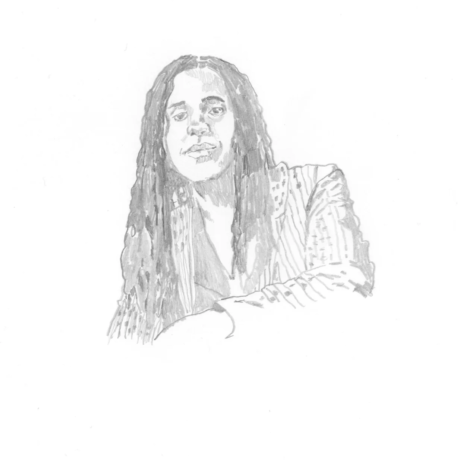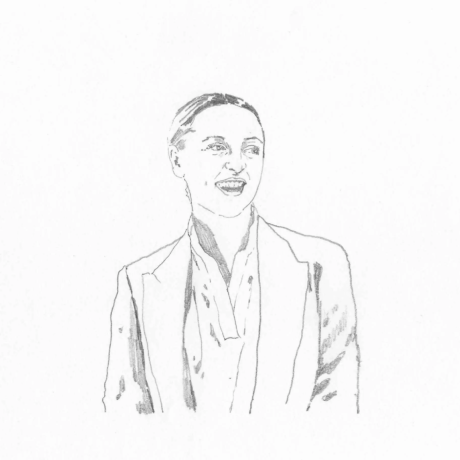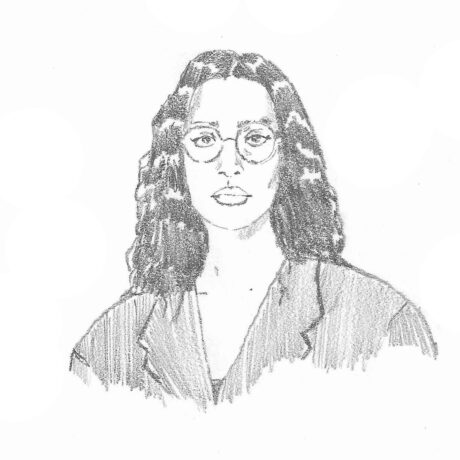Guts Gallery
Tune in to our ongoing series featuring some of the most exciting gallerists from across the globe. Here, we sit down to ask them how they run successful galleries so you can learn how you can too.

Ellie Pennick is the 26 year-old founder and director behind Guts Gallery which sits in the heart of London. Pennick champions artists of all backgrounds but especially highlights those who have been traditionally under-represented in the art world. The gallery aims to facilitate an accessible art market to a younger generation and dismantle hierarchies within the art world. The gallery’s namesake acknowledges Pennick’s gut feeling to challenge these norms.

I was offered a place on an MA at the Royal College of Art but was unable to accept it due to the high tuition fees. This experience prompted me to reflect on the broader issue of social austerity and inequality in the arts industry and why it lags behind other industries in terms of progress.
During this period, I faced several financial difficulties, and I was sofa-surfing and taking on multiple jobs. However, I stumbled upon a room above a pub with a function room while meeting a mate. My frustration was the fuel that fired me up to create a platform for artists who don’t get the recognition they deserve, exhibiting them alongside established artists to create a system of support. It’s been a long-standing problem that artists don’t get the space they need, but I’m trying to tackle it head-on with a fresh and modern approach!
I didn’t plan it; I persisted in organising shows and had my blinkers on. The progression occurred organically over time. A few months back, I had a little freak out when locking up the gallery and thought, “How the hell did I get here”.

Moving to central alongside the blue chips was not viable for us due to the high rent and business rates. Opting for such a move would have been vanity over sanity. New York galleries have always been a step ahead of London, and taking inspiration from emerging galleries that successfully moved to less conventional locations, we decided to do the same. Our primary concern was the amount of foot traffic, as there were few galleries in the area, and our location is in a first-floor building tucked away down an alley. Our nearest station is a 10-minute train journey from central London which was on our side. However, this concern is proven wrong – we have had private views with over 200 visitors. If people are passionate about the artists – they are willing to go the extra mile (literally).

Artists, Collectors and Staff. At Guts, I believe artists, collectors, and staff are the three essential pillars that hold us up. When one of them isn’t happy, it affects the entire business. Sadly, I’ve seen other galleries treat their staff horrifically and use artists like commodities and take advantage of them. Collectors are dismissed if they are not a ‘big name’ in the art world, even when they have the money to pay for the work. That kind of behaviour has got to change. HR is fundamental to our business. We’ve implemented policies and procedures since founding the gallery – codes of values, code of conduct, and code of ethics, plus a document on work culture. It’s insane to me that many galleries don’t have an HR department. Seriously, it’s not hard to find a freelancer to help you out with this stuff. Guts Projects is also a telling insight into our gallery. I’m not into all that competitive gatekeeping that goes on in the art world. That’s why I started Guts Projects. We provide a free space (connected to our main gallery), advice, and technician support to new ventures. I want to pass on everything I’ve learned to others and help them start their own galleries/business ventures. We also want to make creating art more accessible, we’re in discussions with a partner to provide a residency to two deserving artists, and we plan to make an announcement within a year. Renting a studio in London is extremely challenging, especially with the rising rental prices! We are also trying to open discussions with the Secondary Market. There is tension between the primary market and the secondary market. I am trying to open up a dialogue with auction houses to prevent work from getting flipped too early, which can be detrimental to an artist’s career and also super stressful. Sometimes having the Guts to speak out can pay off. We’ve got this exhibition called ‘Buffer’ that I plan on making a regular thing. The idea behind Buffer is to create a platform for up-and-coming post-grad artists to have constructive conversations and connect with one another. Our hope is to help nurture a new generation of confident, independent artists who can navigate the art world on their own terms. Currently, many artists are taken advantage of because they lack knowledge about the business side of things. During our last show, we organised talks and even brought in my bookkeeper to give them some guidance on navigating the business aspects of art!

Olivia Sterling, Elsa Rouy, Shadi Al-Atallah, and Sophie Vallance Cantor, to name a few!
The process is organic! I prefer to take my time to understand the artists, their practices and their lived experiences. There have been instances where I missed out by not acting quickly, but I believe what’s meant to be will be. Plus, I’ve met some of my artists in some pretty unconventional ways – like at the pub or even on a dating app!

The championed artists are my closest friends, and I would even go as far as say they feel like family to me. I spend time with them outside of work, and we support each other through tough times and good times. We have also established and maintained clear work boundaries while learning and growing together.
My clients are great! It’s amazing that we have collectors from all over the world who support our vision. When I started Guts, I wanted to make art collecting a hassle-free experience. I discovered that many collectors faced challenges, so I created a Collectors’ Guide to assist them. We offer payment plans, installation services, and free guidance to support them from the enquiry stage to receiving the artwork. We also recently launched ‘Guts Editions’ to provide collectors with more affordable options!

Watching the artists grow and develop and exhibit at amazing galleries. When an artist goes full-time, and does what they love, it makes me so proud. I also love how excited collectors’ get when they acquire a work they love.

I haven’t spoken openly about this before, but I’ve been bullied, discriminated against, and taken advantage of. It was a horrible experience when starting out, but I use it as fuel to push myself even harder and I had a lot of support.

I owe a debt of gratitude to Kevin, my former employer, who worked in the tech industry and showed me the fundamental principles of starting a company, including how to adapt the tech business model to the gallery industry. I have continued to base my approach on his forward-thinking guidance! Also, Sadie Coles. When we were without a fixed space, she generously offered her Shop to hold an exhibition. The media then featured us, and we gained recognition.

I did an extended diploma at Leeds College of Art when I was 16 and then a BA at Chelsea College of Art (which I didn’t enjoy as much). I dropped out of business studies at GCSE, which is quite ironic!

Advice and money are equally as important. Look at what other galleries are not doing and do that. Cut costs and test and pivot. Create a mission statement, and please get an accountant!

Challenging, fulfilling, and worthwhile.
Typeface developed by Furqan Jawed




